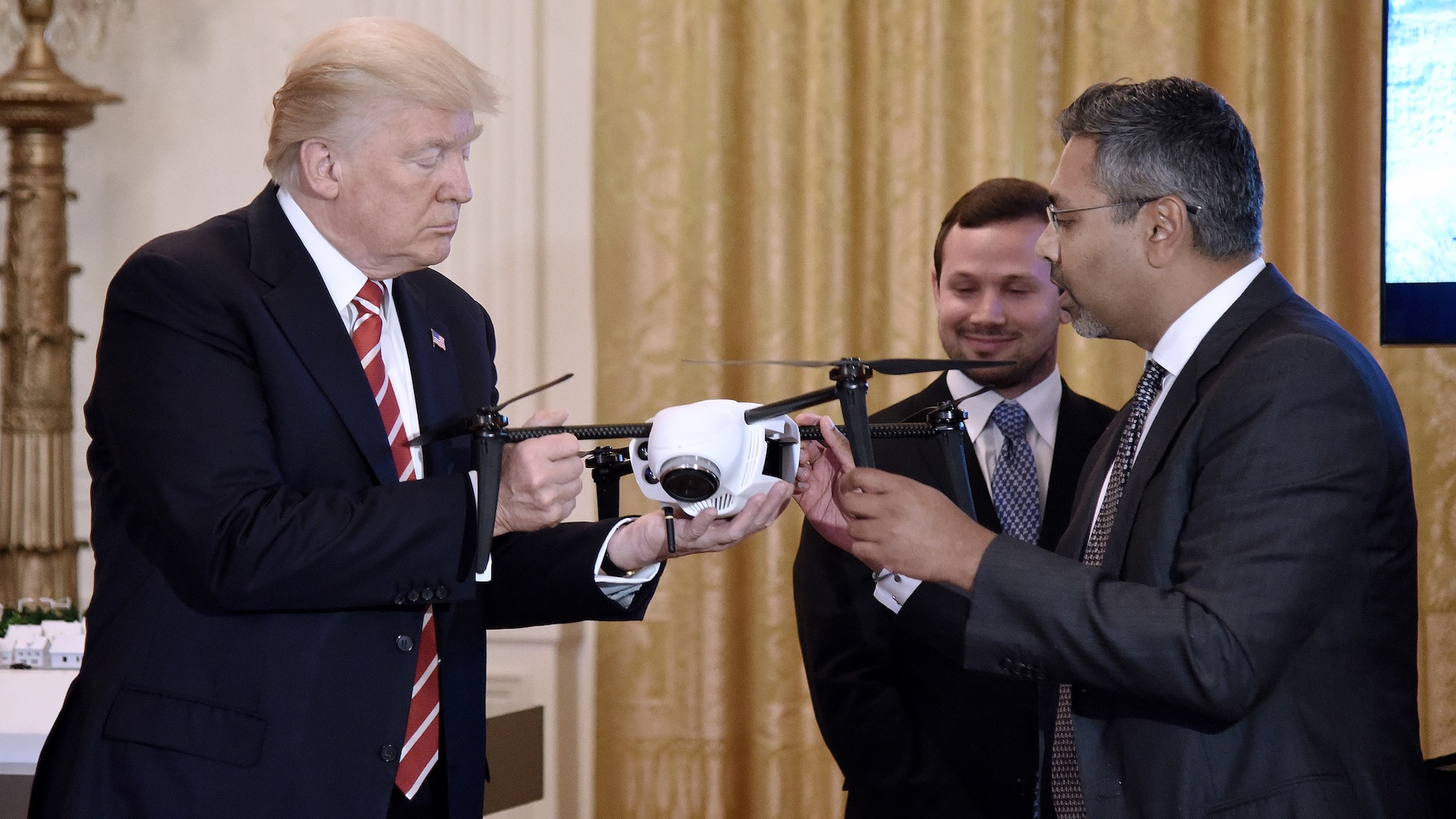

The White House announced Wednesday that the Trump administration is instating a program to expand drone testing, which will allow unmanned aerial vehicles to fly over people, at nighttime, and beyond the visual line of sight.
It’s that last part that is most interesting since current beyond visual line of sight regulations are hampering drone delivery businesses. As an example, Amazon’s package deliveries can’t be instated as desired right now, as each delivery drone would require its pilot to be able to see the drone that he or she is controlling. Expanding testing on this seems like a clear step toward altering this regulation, and standardizing new delivery guidelines and practices.
According to Reuters, the program was launched in hopes to rapidly integrate UAVs into U.S. airspace and to test drone detection and tracking, while establishing potential limitations. Unfortunately, the White House did not provide any clear timeline for these advancements, nor did it propose any actual new regulations. The program will essentially allow states and local governments to ask the Federal Aviation Administration for approval, regarding this expanded testing and drone use.
Reportedly, White House adviser, Michael Kratsios, claimed on Wednesday that the “program will open the skies for delivery of life-saving medicines and commercial packages, inspections of critical infrastructure, support for emergency management operations.” It’s not surprising to have reported on each and every scenario mentioned in that statement over the past few months, as drones are undeniably becoming a part of our infrastructure as time goes on. The Matternet drone in Switzerland has already begun delivering packages between hospitals, while the UNICEF initiative in Malawi is hoping to transport medicines across rural areas. Critical infrastructures are inspected by drones on a regular basis, and police departments are urging citizens to see their benefit. And how about that defibrillator-carrying drone in Sweden? Drones are becoming part of our identity, rapidly, and expanding testing is a logical thing to do.
Kratsios explained that the main three activities that this program will allow corporations and governments to engage in, which have been restricted by the FAA for years, are “beyond-visual-line-of-sight flights, nighttime operations, and flights over people.” Most recently, the FAA granted CNN a first-of-its-kind waiver to fly UAVs above crowds of people, untethered. It seems like things are ramping up. Kratsios added that “in order to maintain American leadership in this emerging industry here at home, our country needs a regulatory framework that encourages innovation while ensuring airspace safety.”
As stated by Reuters, the FAA estimates that hobby drones will triple by 2021, while commercial UAVs will grow by a multiple of ten to 442,000. In June, President Trump met with four of the world’s largest drone company executives in order to discuss various standards for UAV traffic. Reuters reports that the President told them that his administration wants “to create new companies and lots of jobs…We’re going to give you the competitive advantage that you need.” Of course, if any of that is actually true, remains to be seen. However, establishing drone guidelines seems like an issue the current administration is actually thoroughly engaged in.
Stay tuned, as we wait for developments on this continuous push-and-pull to finally create clear guidelines and regulations for commercial drone delivery across the U.S.